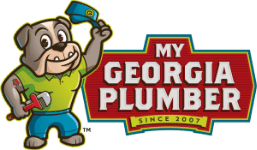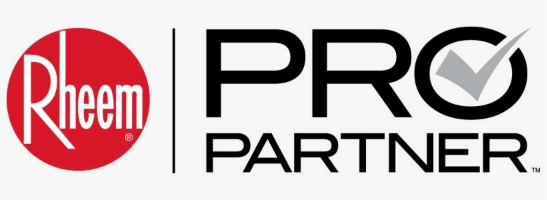
A continued summary of significant revisions of the International Plumbing Code.
This is the continuation of a series of columns covering only the code changes that were approved as submitted from 2018 to the 2021 International Plumbing Code (IPC) change hearings. There were many code change proposals and two rounds of code hearings for the 2018 IPC. The following is a summary of the significant code changes that were approved during the International Code Council hearings in Columbus, Ohio, and Richmond, Va.
These code changes will appear in the 2021 edition of the International Plumbing Code, which will soon be published and available for jurisdictions to consider for adoption. Because it is possible for modifications to the proposed text be made from the floor during the code hearing process, and where there were multiple code changes to the same section which will require ICC staff to develop the final text for a given code section incorporating all the changes, I recommend you refer to the 2021 IPC for the final version of any code changes reported on hereinafter.
Proposed additions are underlined and deletions are struck through. They are followed by the proponents’ published reason statements, along with any of my comments as noted.
The following 2018 International Plumbing Code sections were added or modified for publication in the 2021 edition of the IPC.
Code Change: IPC Section 411.3, Water Supply, and Chapter 15, Referenced Standards
Add new Reference Standard as follows:
Chapter 15 Referenced Standards
1085-2018:
Performance Requirements for Water Heaters for Emergency Equipment
Revise as follows:
Where hot and cold water is supplied to an emergency shower or eyewash station, the temperature of the water supply shall only be controlled by a temperature actuated mixing valve complying with ASSE 1071. Where water is supplied directly to an emergency shower or eyewash station from a water heater, the water heater shall comply with ASSE 1085.
Proponent’s reason statement: A new standard, ASSE 1085, was developed for water heaters specifically designed for emergency fixtures. The standard is comparable to the valve standard ASSE 1071. The water heater cannot produce a temperature of hot water exceeding 100 F. The water heater produces water within a minute at the tepid temperature range required for emergency fixtures.
These water heaters are typically installed within the close proximity of the emergency fixture. This is an alternative method for meeting the high flow rates for emergency showers without the need for adding to the hot water demand of the plumbing within the building.
Staff analysis: A review of the standard proposed for inclusion in the code, ASSE 1085-2018, with regard to the ICC criteria for referenced standards (Section 3.6 of CP No. 28) will be posted on the ICC website on or before April 2, 2018.
My comments: This standard was not completed at the time of the first round of the code hearings. The code change was moved forward to the commentary hearings, where the finalized standard was submitted for ICC staff for review before the April 2 deadline. ICC staff typically reviews the standard for content to be assured it is written in mandatory language.
They check to ensure the standard is appropriate for the subject covered, all terms are defined when they deviate from an ordinarily accepted meaning or a dictionary definition, the scope or application of a standard shall be clearly described, that the standard shall not have the effect of requiring proprietary materials, it shall not prescribe a proprietary agency for quality control or testing, the tests in the standard should be described in detail and how to prepare and select a test sample.
ICC staff also check to see if the test standard prescribes the reporting format for the test results, if the referenced standard test report format identifies the key performance criteria for the element(s) tested, and to see if the standard clearly defines the measure of performance for each test. The standard is also reviewed to see that it does not state that its provisions shall govern whenever the referenced standard is in conflict with the requirements of the referencing code.
The preface to the standard must announce that it was promulgated according to a consensus procedure. However, there are still a few questions about the application and tests to confirm the water heater will perform safely under extreme flow changes without causing scalding conditions.
Code Change: IPC Section 412.3, Individual Shower Valves, 412.4, Multiple (Gang) Showers, and 412.5, Bathtub and Whirlpool Bathtub Valves
Revise text as follows:
412.3 Individual shower valves.
Individual shower and tub-shower combination valves shall be balanced-pressure, thermostatic or combination balanced-pressure/thermostatic valves that conform to the requirements of ASSE 1016/ASME A112.1016/CSA B125.16 or ASME A112.18.1/CSA B125.1 and . Such valves shall be installed at the point of use. Shower and tub-shower combination valves required by this section shall be equipped with a means to limit the maximum setting of the valve to 120°F (49°C), which shall be field adjusted in accordance with the manufacturer's instructions to provide water at a temperature not to exceed 120º F. In-line thermostatic valves shall not be utilized for compliance with this section.
412.4 Multiple (gang) showers.
Multiple (gang) showers supplied with a single-tempered water supply pipe shall have the water supply for such showers controlled by an approved automatic temperature control mixing valve that conforms to ASSE 1069or CSA B125.3, or each shower head shall be individually controlled by a balanced-pressure, thermostatic or combination balanced-pressure/thermostatic valve that conforms to ASSE 1016/ASME A112.1016/CSA B125.16 or ASME A112.18.1/CSA B125.1 and that is installed at the point of use. Such valves shall be equipped with a means to limit the maximum setting of the valve to 120° F (49° C), which shall be field adjusted in accordance with the manufacturers' instructions to provide water at a temperature not to exceed 120ºF. Access shall be provided to a ASSE 1069 or CSA B125.3 valve.
412.5 Bathtub and whirlpool bathtub valves.
The hot water supplied to bathtubs Bathtubs and whirlpool bathtubs bathtub valves shall be limited to not greater than 120°F (49°C) have or be supplied by a water-temperature limiting device that conforms to ASSE 1070/ASME A112.1070/CSA B125.70 or CSA B125.3, except where such protection is otherwise provided by a valves are combination tub/shower valve valves in accordance with Section 412.3. The water temperature limiting device required by this section shall be equipped with a means to limit the maximum setting of the device to 120º F (49º C), and, where adjustable, shall be field adjusted in accordance with the manufacturer's instructions to provide hot water at a temperature not to exceed (120º F (49º C). Access shall be provided to water temperature limiting devices that conform to ASSE 1070/ASME A112.1070/CSA B125.70 or CSA B125.3.
Exception: Access is not required for non-adjustable water temperature limiting devices that conform to ASSE 1070/ASME A112.1070/CSA B125.70 or CSA B125.3 and are integral with a fixture fitting, provided that the fixture fitting itself can be accessed for replacement.
Proponent’s reason statement: These three sections were not specific about actually requiring field adjustment of the temperature limiting devices to a not-to-exceed temperature. The language only required that the device had to have the capability of being adjusted and that field adjustment is required. The revised language makes the intent clear.
Neither Section 412.4 or 412.5 required access for the temperature-limiting devices. Although it would seem that installers would intuitively understand the need for access, too often these devices end up being concealed in a wall or behind a permanently installed tub apron. The revised language makes the need for access clear.
The language of Section 412.5 needs updated to recognize some newer designs of tub valves that have integral water temperature-limiting devices that comply with ASSE 1070/ASME A112.1070/CSA B125.70. These new designs of tub valves are factory-adjusted to limit the discharge water temperature to 1,200 F (49 C). These valves are not field-adjustable and require entire valve replacement should the temperature-limiting device fail to work as intended. This proposal is submitted by the ICC PMG CAC.
My comments: This language cleared up confusion about the adjustment of the temperature-limit setting on shower and tub-shower valves. Now, hopefully, the plumbing inspectors will spot-check shower installations to ensure that the shower temperature does not exceed 120 F.
I would like to see home inspectors, realtors and insurance companies require checking of the maximum temperature flowing from showers, bathtubs and whirlpool bathtubs to a maximum of 120 F before the sale or rental of a property. This would be a good provision to bring forward in the property maintenance code to protect many of the people in rental properties from slum lords.
In addition, this code change requires access to these temperature controls, which in most cases for shower or tub-shower valves, access is provided under the escutcheon plate of the valve. For temperature-limiting valves and temperature-actuated mixing valves/gang shower valves, access will now be required.
Code Change: IPC Section 412.3, Individual Shower Valves, and 412.4, Multiple (Gang) Showers
Revise text as follows:
412.3 Individual shower valves.
Individual shower and tub-shower combination valves shall be balanced-pressure, thermostatic or combination balanced-pressure/thermostatic valves that conform to the requirements of ASSE 1016/ASME A112.1016/CSA B125.16 or ASME A112.18.1/CSA B125.1 and shall be installed at the point of use. Shower control valves shall be rated for the flow rate of the installed showerhead. Shower and tub-shower combination valves required by this section shall be equipped with a means to limit the maximum setting of the valve to 120°F (49°C), which shall be field adjusted in accordance with the manufacturer's instructions. In-line thermostatic valves shall not be utilized for compliance with this section.
412.4 Multiple (gang) showers.
Multiple (gang) showers supplied with a single-tempered water supply pipe shall have the water supply for such showers controlled by an approved automatic temperature control mixing valve that conforms to ASSE 1069 or CSA B125.3, or each shower head shall be individually controlled by a balanced-pressure, thermostatic or combination balanced-pressure/thermostatic valve that conforms to ASSE 1016/ASME A112.1016/CSA B125.16 or ASME A112.18.1/CSA B125.1 and is installed at the point of use. Where a showerhead is individually controlled, shower control valves shall be rated for the flow rate of the installed showerhead. Such valves shall be equipped with a means to limit the maximum setting of the valve to 120°F (49°C), which shall be field adjusted in accordance with the manufacturers' instructions.
Proponent’s reason statement: The thermal protection afforded by shower valves can be compromised if the flow rate of the showerhead is less than the flow rate for which the protective components of the valve have been designed. The proposed text is consistent with similar requirements found in ASSE 1016/ASME A112.1016/CSA B125.16 and ASME A112.18.1/CSA B125.1.
As manufacturers continue to innovate with more water- and energy-efficient showerheads, this proposal is needed to ensure that new buildings built to the code will safely accommodate the showerheads selected by the designer or builder. Note that this language does not require that the showerhead itself have a flow rate of less than 2.5 gpm, but simply that the flow rating of the shower valve matches the flow rate of the installed showerhead to provide the scald and thermal shock protection required by the recognized standard when the valve model is tested.
Note that the 2012 Uniform Plumbing Code, Section 408.3, contains a similar requirement for “matching” the valve and showerhead flow rates as follows:
"Showers and tub-shower combinations shall be provided with individual control valves of the pressure balance, thermostatic, or combination pressure balance/thermostatic mixing valve type that provide scald and thermal shock protection for the rated flow of the installed showerhead." The IPC and IRC should be no less protective of health and safety than the UPC.
This proposal is submitted by the ICC PMG CAC.
My comments: I have served on the ASSE 1016 Standard committee for individual shower valves and I have served on the ASME A112 main committee for plumbing materials and equipment dealing with shower heads. I also was a participant in the EPA Water Sense specification writing committee that developed a specification and test for low-flow shower heads.
The showerhead manufacturers wanted to keep reducing flows. The shower valve manufacturers (who also manufacturer showerheads that match the flows through their shower valves) and the Plumbing Manufacturers International were pushing back a little because there was very little testing done on how well their shower valves would control temperatures if the flows were significantly below the 2.5 gpm level at which they were tested to comply with the ASSE 1016 standard.
There was genuine concern about the ability of some shower valves to accurately control the shower temperature at ultra-low flows as was being proposed. A chart was produced at one meeting showing different flow rates through various manufacturers’ shower valves, which were labeled with letters in order to protect the manufacturer’s names in the study.
As flow rates were reduced, the percentage of shower valve manufacturers that could still control temperature to the limits in the ASSE industry shower valve standard went down drastically.
The problem is that all shower valves were tested at the time to only 2.5 gpm. Now, the ASSE 1016 standard has been revised to allow testing at 2.5 gpm and if a shower valve can control at a lower flow rate, a manufacturer can test the shower valve to a lower flow rate and publish the lower flow rate as a minimum flow rate in order to control temperatures to that required in the ASSE 1016 standard. That solves one problem.
Another problem has been the proliferation of water-saving showerhead manufacturers selling ultra-low flow showerheads to water utilities and cities for free giveaways to consumers as part of water conservation efforts. What if you receive a showerhead rated at 0.5 gpm from a water department or city as part of a water conservation program and simply replace the old showerhead with the new low flow one? This is like a game of Russian roulette and could produce a situation where the old shower valve cannot accurately control the temperature and it could create a scalding risk.
For this reason, the code change tried to force the issue by requiring the shower valve to match the flow rate of the showerhead. This is simply a case of the tail wagging the dog. The showerhead should match the flow rate of the shower valve it is connected to. The manufacturers already match the flow to the showerhead because they sell these together.
Now, it appears that, according to this new code language, if someone comes along and replaces a showerhead with a lower-flow showerhead, the shower valve will become noncompliant, requiring a shower valve replacement or the keeping of the older, high-flow showerhead.
Code Change: IPC Section 412.5, Bathtub and Whirlpool Bathtub Valves
Revise text as follows:
412.5 Bathtub and whirlpool bathtub valves.
The hot water supplied to bathtubs and whirlpool bathtubs shall be limited to not greater than 120°F (49°C) by a water-temperature limiting device that conforms to ASSE 1070/ASME A112.1070/CSA B125.70 or CSA B125.3, except where such protection is otherwise provided by a combination tub/shower valve in accordance with Section 412.3.
Proponent’s reason statement: In June 2017, the Canadian Standards Association’s CSA B125 Committee completed the project that removed the automatic compensating valve requirements from CSA B125.3. The reason for this was the publication of harmonized ASSE 1070/ASME A112.1070/CSA B125.70 standard.
My comments: This code section was changed in the previous code change proposal, but the specific language proposed in the change was different. This happens each code cycle as there may be multiple code change proposals to the same code section adding and removing various language. In the end, the ICC staff must sort through the code changes and develop the final code language, which will be published in the 2021 International Plumbing Code.
We will continue next month with the rest of the code changes from the 2018 to 2021 code.







